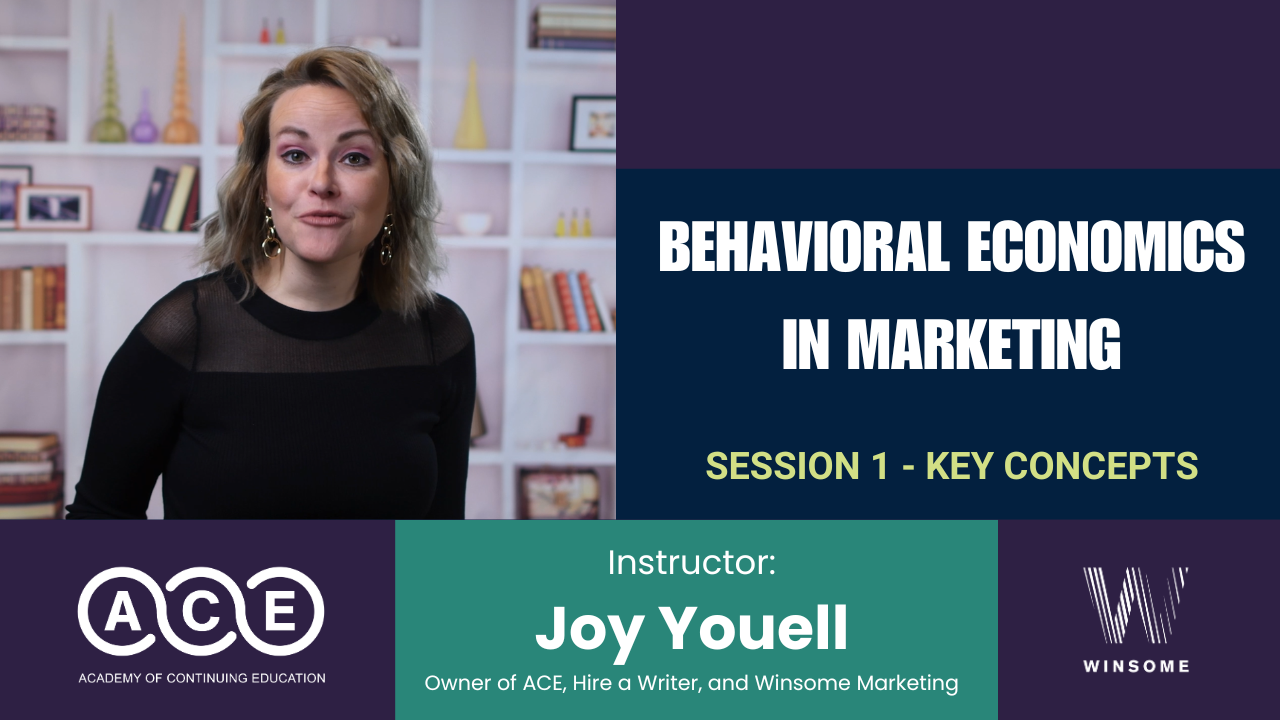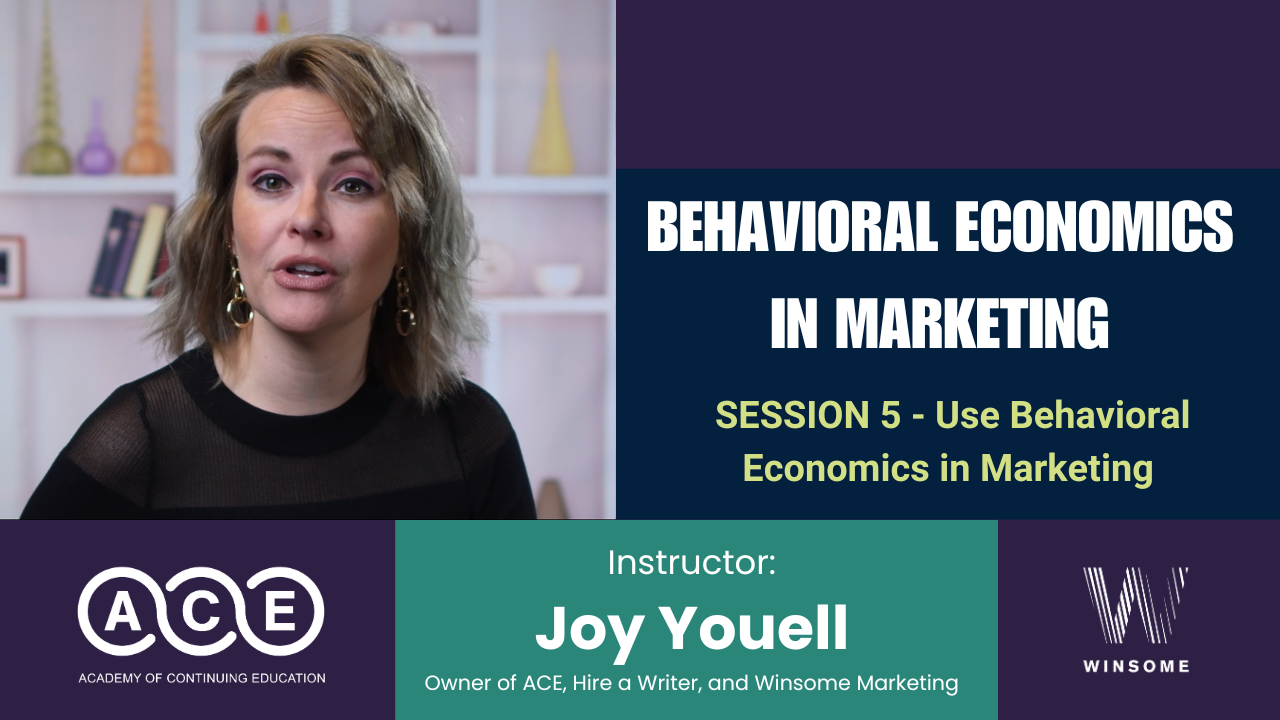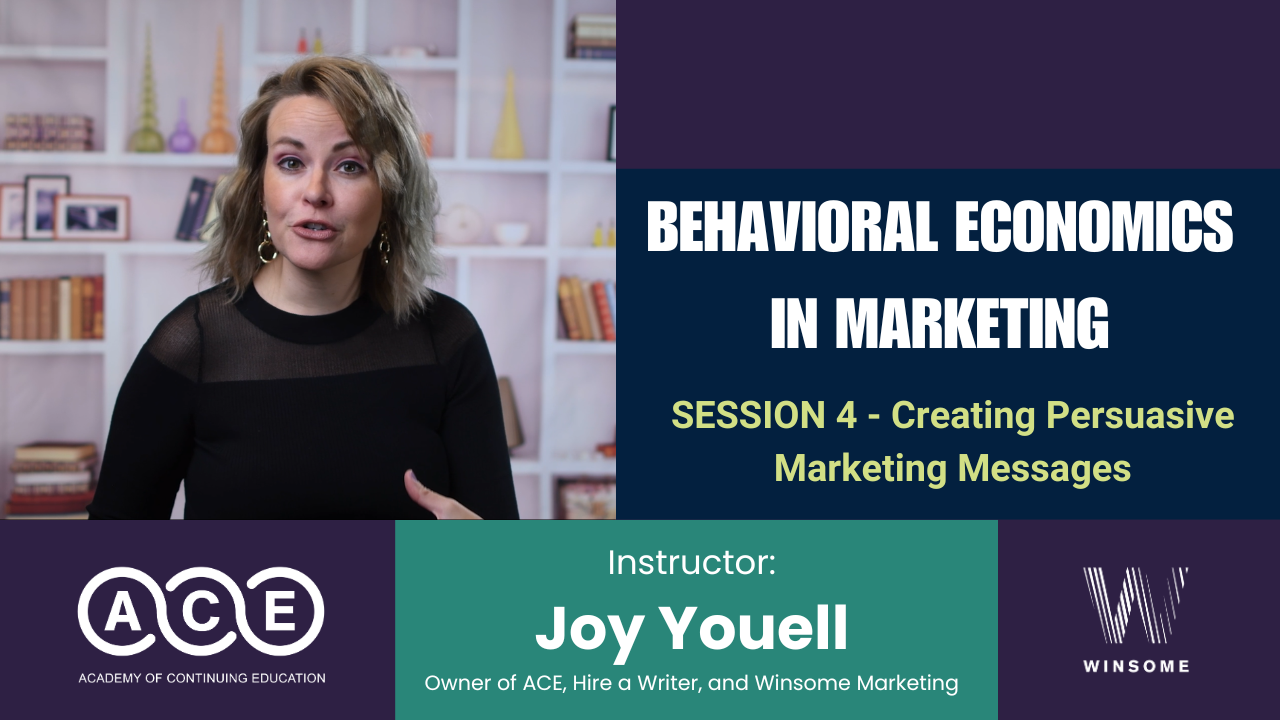Behavioral Economics in Action
While understanding the theoretical foundations of behavioral economics is valuable, the true power of these insights emerges when we examine how...
3 min read
 Joy Youell
:
Mar 17, 2025 6:30:05 PM
Joy Youell
:
Mar 17, 2025 6:30:05 PM

Traditional marketing approaches often assume consumers make purely rational, self-interested choices—but the reality is far more complex. Enter behavioral economics, a field that has revolutionized how we understand consumer behavior and, by extension, how we approach marketing.
Behavioral economics studies how real people make decisions in the real world. Unlike classical economic theory, which assumes people are perfectly rational actors with unlimited cognitive resources, behavioral economics recognizes that human decision-making is messy, context-dependent, and influenced by psychological, emotional, and social factors.
This field challenges the notion of "homo economicus"—the idealized rational decision-maker who always maximizes utility. Instead, it examines the gap between what people should do (according to traditional economic models) and what they actually do, providing invaluable insights for marketers seeking to influence consumer behavior.
Understanding these foundational concepts can transform your marketing approach:
Humans have limited cognitive abilities, information, and time. Even when all relevant information is available, we don't always make the "correct" choice from an economic perspective. Instead, we rely on mental shortcuts and rules of thumb (known as heuristics) to simplify decision-making.
Marketing Application: Recognize that overwhelming consumers with too many options or complex information can lead to decision paralysis. Simplify choices and highlight the most relevant information to facilitate easier decision-making.
People feel the pain of losses more acutely than the pleasure of equivalent gains. The emotional impact of losing $100 typically outweighs the positive feelings associated with gaining $100.
Marketing Application: Frame your offerings in terms of what customers might lose by not choosing your product, rather than focusing solely on potential gains. Emphasize how your product helps avoid negative outcomes.
Our decisions are heavily influenced by implicit or explicit rules within our social groups. We look to others to determine appropriate behavior and are more likely to follow actions that appear common or normal.
Marketing Application: Leverage social proof by highlighting how many others use and love your product. Show testimonials, user counts, or popularity metrics to tap into consumers' desire to conform to social norms.
These behavioral economics principles aren't just theoretical—they've been successfully implemented in numerous marketing campaigns:
The Economist famously offered three subscription options:
The print-only option served as a "decoy" that made the identically priced bundle seem like an exceptional value. By strategically framing choices, they influenced consumers to select the more premium option.
Rather than simply comparing Tide Pods to competing products, P&G positioned them as revolutionary replacements that would make traditional detergents obsolete. This strategy leveraged consumers' fear of missing out and falling behind, playing directly into loss aversion.
Nivea offered their Q10 cream in two sizes:
While the larger size had a lower per-ounce cost, many consumers opted for the smaller version that seemed more affordable at first glance. This strategy works because consumers often use price as a mental shortcut rather than calculating the per-unit value.
The advantages of applying behavioral economics principles to your marketing strategies are substantial:
One study highlighted in the course demonstrated how simply making water bottles more visible near a cafeteria's cash register increased water sales by 25%. These small, psychologically informed changes can lead to significant behavioral shifts.
While behavioral economics offers powerful tools for influencing consumer behavior, ethical application is paramount. There's a fine but crucial line between helpfully nudging consumers toward beneficial decisions and manipulating them in ways that undermine their autonomy or trust.
As marketers, we must commit to:
The goal should never be to trick consumers but rather to understand their decision-making processes and create more meaningful connections.
To start applying these principles:
Behavioral economics provides a more realistic model of human decision-making than traditional economic theory, offering marketers invaluable insights into consumer behavior. By understanding and ethically applying principles like bounded rationality, loss aversion, and social influence, you can create more effective marketing strategies that resonate with how people actually make decisions in the real world.
The most successful modern marketing doesn't fight against human psychology—it works with it, creating experiences that feel intuitive and compelling to consumers while building lasting brand relationships.
Ready to transform your marketing approach with the power of behavioral economics? Join ACE from Winsome today for more in-depth content like this, along with actionable frameworks, case studies, and expert guidance to revolutionize your marketing effectiveness. Elevate your strategy beyond traditional approaches and start creating campaigns that truly understand and influence consumer behavior. Sign up now and become part of a community of forward-thinking marketers leveraging the science of decision-making!

While understanding the theoretical foundations of behavioral economics is valuable, the true power of these insights emerges when we examine how...

In today's hyper-competitive marketplace, simply having a great product or service isn't enough. The most successful brands understand something...

Have you ever wondered why consumers choose one product over another when both seem virtually identical? Or why your perfectly logical marketing...